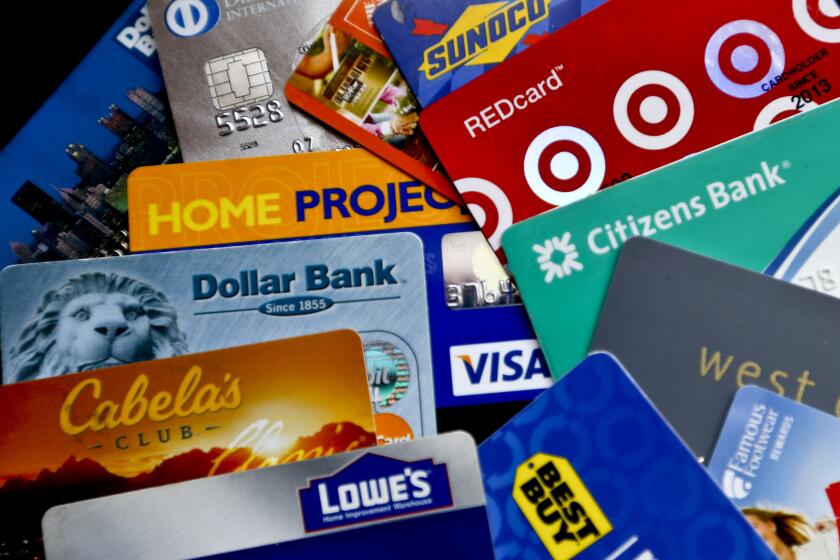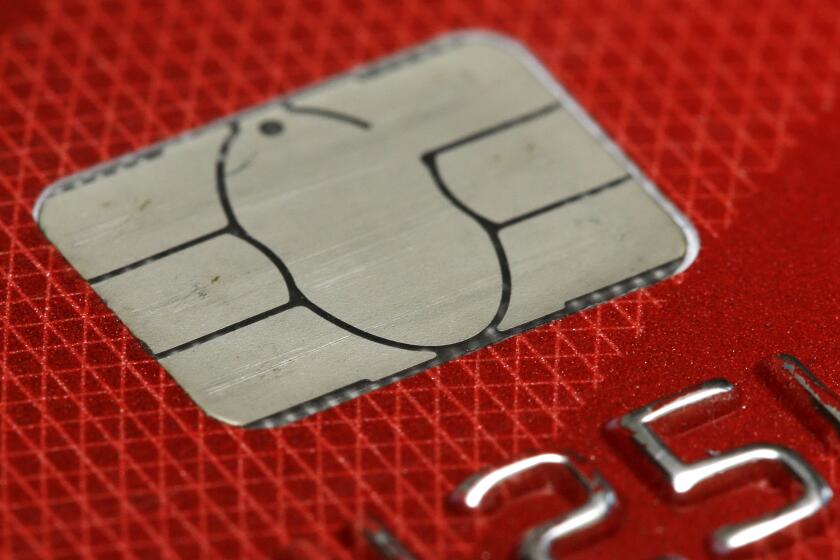How credit scores are evolving to improve access to credit

- Share via
A low credit score can hurt your ability to take out a loan, secure a good interest rate or increase the spending limit on your credit card.
Some reasons for a low score are out of your control — such as unexpected medical debt or a lack of credit history.
Credit rating agencies are working to improve access to credit by giving people more time to pay medical bills before the debt appears in reports, and by removing other debt completely. They’re also making it easier to count rent, utility payments and other recurring bills — a boon for those who need credit the most.
Here’s what to know:
What is a credit score and why is it important?
Put simply, a credit score is a formula that lenders use to decide how likely you are to pay back a loan. If you’re considered a risky bet, you will pay more to borrow or may not be able to borrow at all.
California car insurance regulators approved some big rate increases in the last six months after a long COVID break. And more are in the pipeline.
The factors that go into calculating your score are complicated, and advocates say it’s positive that ratings firms have started making it easier for consumers to prove that they’ll be able to pay back money they borrow. It’s especially important for so-called thin file consumers — those with a lack of extensive credit history, who are often younger or lower income.
“I do see that efforts are being made in order to equalize the credit score,” said Rosalyn Glenn, a financial advisor at Prudential who focuses on expanding financial access. “For instance, adding rental payments to credit reports, because there is a segment of the population that rents and does not own. That’s exciting — because the score can give them an opportunity for better rates on things like insurance and loans. I do believe progress is being made there.”
What’s happening with medical debt?
After conducting industry research during the pandemic, the three most-used credit rating agencies found that consumers with medical expenses were just as likely to be creditworthy as those without.
Effective July 2022, paid medical collection debt is no longer included on consumer credit reports, and the time period before unpaid medical collection debt appears is now a year, up from six months. That gives people more time to work with insurance and healthcare providers to pay off the debt.
In the first half of 2023, Equifax, Experian and TransUnion will also remove medical collection debt under $500 from credit reports.
Credit bureaus pay attention to your credit utilization, or how much of your combined credit card limits you’re using. Here’s how to manage it.
When Jonnathan Alvarado, 25, was in a car accident this past year, he knew health expenses wouldn’t be the only hit to his finances. A landscaping contractor in Plainfield, N.J., who prides himself on careful financial behavior, Alvarado faced knee surgery at the beginning of his busiest work season, which hurt his productivity.
Alvarado said he realized only in retrospect the consequences for his access to credit. Even after insurance, Alvarado still owed in the vicinity of $1,200, which he took several months to pay off. During that time, his credit score dropped to 680, still considered good, but lower than it had been. When he finished paying the debt, it jumped to 775, the highest it had ever been.
It was only when Alvarado looked into what caused the decline and rebound that he learned that the lingering medical debt had been responsible.
“A difference of almost a hundred points,” Alvarado said. “I would have paid it off sooner if I had known.”
David Anthony, 43, who drives a service truck in Baltimore, learned that medical debt was dragging his credit down when an employer pointed out the high interest rate he was paying on an auto loan. After looking into his score, Anthony disputed certain medical bills, some of which had been paid, eventually bringing his score up from the 500s to above 700.
“I got a great loan on the cars that I have now,” he said. “That first car — it was a 17% interest rate. That’s what raised the red flag to my employer.”
Anthony is now down to a single-digit interest loan.
Even if you’ve lived your whole life without worrying about your credit scores, they’re hugely influential and have some quirks worth knowing about.
How else can I increase my credit score?
Although consumers have long been able to add rent and utility bill payments to their credit files, the bureaus have made these additions easier and less costly in recent years.
Experian, for example, has an option for consumers to opt in to a service, Experian Boost, that counts these kinds of payments without charging a fee. In some other cases, companies may charge the renter or landlord for the trouble of filing the additional information in credit reports, since it isn’t automatically included as a matter of course. Those who use the program often see an increase in their scores.
“You’re making a payment once a month for a service you receive — very much like getting a loan,” said Rod Griffin, financial health advocate at Experian. “What we found in our research was that those kinds of pieces of information do indicate that a person may be a better credit risk than their report might show if they have very little credit.”
For people with thin credit files or scores below 680, Experian sees an average increase in the neighborhood of 19 points, Griffin said. About two-thirds of people see an improvement in their scores, but the tool helps even those who don’t build a longer credit history, he said.
To use the tool, you give Experian permission to capture your monthly payment history and bank information — whether that’s a cellphone plan, water bill, streaming service subscription or rent.
A stolen wallet precipitates a reporter’s years-long fight against identity thieves — and a system that doesn’t care and won’t help.
For Brandon Reese, 41, a financial planner in Dallas, it made sense for him to help his 20-year-old daughter, a nursing student, opt in.
“When she first opened a line of credit, her score dropped,” he said. “But with this, we were able to get it about 15% higher.”
Reese said he also advises his retired clients to use the programs.
“For older people, they have low credit scores, too, because they’ve paid everything off,” he said. “So their credit goes down. But now — Verizon, AT&T, Hulu, the Disney bundle, Netflix, your gas bill — fintech companies can justify those as payment histories.”
Tech companies that provide similar services to Experian Boost, either at low or no cost, have proliferated.
“That is now one of the No. 1 things we encourage people to do,” said Silvio Tavares, chief executive of VantageScore, another provider of national consumer credit scores. Like FICO, VantageScore uses the credit reports compiled by Equifax, Experian and TransUnion to calculate a rating of creditworthiness using its own algorithm. “If you’re engaging in creditworthy behavior — like paying rent and utilities on time — you want to include that.”
How do I opt in?
To include alternative credit information on your report, you have several options. One is to opt in to Experian Boost or Ultra FICO by going to the companies’ websites and granting permission for them to access your checking, savings or money market accounts. This will allow the credit bureau or scoring company to analyze your spending, saving and consistent payment histories. Other financial tech platforms provide similar services, but these two options do not charge fees.
More to Read
Inside the business of entertainment
The Wide Shot brings you news, analysis and insights on everything from streaming wars to production — and what it all means for the future.
You may occasionally receive promotional content from the Los Angeles Times.














